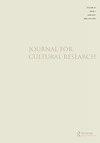女性作为证人、受害者和反派:《致命框架II》中的多方面角色扮演
IF 0.6
Q1 CULTURAL STUDIES
引用次数: 0
摘要
摘要2003年,柴田诚执导的日本民间恐怖游戏《致命框架II:深红蝴蝶》中,主人公见证了一个古老的社会传统,即双胞胎的祭祀仪式,导致女性受害者变成了一个恶毒的灵魂。渐渐地,玩家Mio配备了Camera Obscura,在一系列事件中从观察者转变为参与者,从而牺牲了自己的双胞胎妹妹。这篇文章的重点是在民间恐怖亚类中建立游戏,然后考察三个女性角色:主角米奥,她从目击者/偷窥者转变为参与者;马育,他们的双胞胎,从不愿牺牲转变为愿意牺牲;以及Sae,最初仪式的受害者和反对者。在《致命框架II》中,当玩家面对村庄扭曲的信仰时,捕捉超自然世界的摄像机是过去和现在模糊的镜头。通过分析游戏的叙事、荒诞元素和视觉美学,我考察了这些角色如何融入民间恐怖、性别和日本民间传说的背景。本文章由计算机程序翻译,如有差异,请以英文原文为准。
Women as witness, victim and villain: multifaceted role-play in Fatal Frame II
ABSTRACT In 2003 Japanese folk horror game Fatal Frame II: Crimson Butterfly directed by Makoto Shibata, the protagonist bears witness to an ancient tradition of a community linked to the ritual sacrifice of twins, which results in the female victim becoming a malevolent spirit. Gradually the player, as Mio, equipped with the Camera Obscura, transitions from observer to participant in the cycle of events that results in sacrificing their own twin sister. This article focuses on establishing the game within the folk horror subgenre, before examining three female characters: Mio, the protagonist, who shifts from witness/voyeur to participant; Mayu, their twin, who transitions from unwilling to willing sacrifice; and Sae, the victim of the original ritual and antagonist. In Fatal Frame II, the Camera Obscura, which captures the supernatural world, is the lens through which past and present blur as the player is confronted by the twisted beliefs of the village. Through analysis of the game’s narrative, ludic elements, and visual aesthetics, I examine how these roles fit within the context of folk horror, gender and Japanese folklore.
求助全文
通过发布文献求助,成功后即可免费获取论文全文。
去求助
来源期刊

Journal for Cultural Research
CULTURAL STUDIES-
CiteScore
1.40
自引率
0.00%
发文量
23
期刊介绍:
JouJournal for Cultural Research is an international journal, based in Lancaster University"s Institute for Cultural Research. It is interested in essays concerned with the conjuncture between culture and the many domains and practices in relation to which it is usually defined, including, for example, media, politics, technology, economics, society, art and the sacred. Culture is no longer, if it ever was, singular. It denotes a shifting multiplicity of signifying practices and value systems that provide a potentially infinite resource of academic critique, investigation and ethnographic or market research into cultural difference, cultural autonomy, cultural emancipation and the cultural aspects of power.
 求助内容:
求助内容: 应助结果提醒方式:
应助结果提醒方式:


